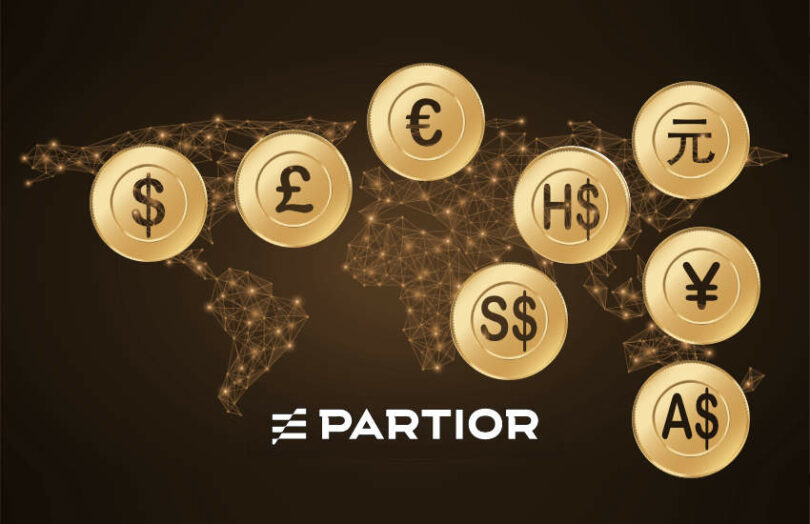Partior, the blockchain-powered platform for ‘value exchange’ from JP Morgan, DBS Bank,andTemasek was unveiled a year ago in Singapore. Two weeks ago, Standard Chartered joined as a backer. Partior is an interbank network supporting multi currency payments starting with the US dollar and Singapore Dollar, with six more currencies currently onboarding. A year on, the company’s global ambitions have become evident.
Global ambitions
The stated number one objective is to “build a generally available platform that could support and scale a global ledger,” according to CEO Jason Thompson. Partior is engaged with 60 banks across 15 jurisdictions, and when he spoke to Ledger Insights, Thompson was in London for talks with the Bank of England and others. It’s currently hiring in the five major world financial centers.
“One or two of our industry peersposition us as an Asian boutique network,” observed Thompson. “If an Asian boutique network has the largest bank in the world from the West, then that’s kind of strange.”
Partior started with one settlement bank per currency, but that’s now evolved to multiple settlement banks. And it’s currently onboarding GBP, EUR, AUD, JPY, CNH and HKD.
Beyond scaling to currencies and more banks, Partior is adding additional services. It’s currently working on FX PvP and intraday swaps. After that comes delivery versus payment (DvP) integration with digital asset networks and all the interoperability that involves.
A clear strategy reminiscent of SWIFT
Many new infrastructures profess to be the next SWIFT of digital assets or payments. Partior makes no such claims. But if you observe its strategy, it looks like a nimbler, more open and interoperable SWIFT.
Its COO, Stella Lim, hails from SWIFT.Partiorpositions itself as a network rather than a payment or settlement system. It aims to make digital clearing and settlement more efficient, reliable and secure for financial institutions, be it banks or non-bank financial institutions.While Partior is a wholesale network, italso supports others that add retail payment applications on top of its network.
“Partior is not a payment system,” said Thompson. “We cannot instigate a transaction, move, store money, or create finality, and we do not acquire any data.”
That means, like SWIFT, it neither needs a central bank account nor direct central bank approval, although commercial banks may need to get a greenlight from their regulator to use its network. This point is critical because it enables Partior to move at speed.
Banks have nodes on the network to make payments, and banks are in control. They own the smart contracts, have control over their deployment, initiate payments and determine finality. Payments are in commercial bank money.
The fact that Partior grew out of a central bank digital currency (CBDC) experiment, Project Ubin, means the potential of central banks to have nodes clearly exists.
Thompson commented that Partior does not “centralize risk in any way. Technology risk, data risk or financial.”
Other interbank payment networks
Comparing Partior’s strategy with one of the other big blockchain payment initiatives, Fnality, backed by 17 major financial institutions, is useful.
In Fnality’s case, while it hasn’t yet launched, it has already been designated as a systemic payment system by the UK Treasury. And its launch has just been delayed by nine months, at least partly coming from its payment regulator, the Bank of England.
Compared to Partior’s commercial money payments, Fnality payments are all in central bank money. Fnality payment coins are backed by central bank money, making them a synthetic CBDC. This significantly reduces counterparty risk, although it doesn’t 100% eliminate it.
However, circling back to the CBDC point, Thompson sees Partior as both supporting commercial bank money (M1) and central bank money (M0). “M0 is a clearing function across settlement banks, and M1 is a clearing function within commercial banks and their ecosystem,” said Thompson. The implication is that commercial money is simply Partior’s starting point. “We can do that (payments) either on M0 or M1 currency. It doesn’t matter to us,” added Thompson.
Partior is already engaged with multiple central banks. It is involved in Project Dunbar, the multi-CBDC project with the central banks of Singapore, Malaysia, Australia and South Africa and the BIS Innovation Hub. And we’re guessing Thompson’s London trip partly relates to another BIS Innovation Hub initiative, Project Meridian, which aims to synchronize RTGS infrastructures with digital asset ledgers and payment systems in foreign currencies.
Make no mistake, payments are being disrupted
SWIFT also wants to participate in this new CBDC world and launched a trial to interlink domestic CBDCs for cross border payments. While it’s understandable to want to transform rather than disrupt, its CBDC approach continued to its current role of sending messages rather than money, as we observed when it was announced.
However, the key innovation of blockchain payments is the integration of the message with the money and its movement. And the ability to have atomic transactions.
Thompson compares the payment sector with electric vehicles (EV). “The way that the power unit in cars changed disrupted everything, from supply chain through servicing. Even down to the methodology of selling the car,” he said. “The minute you changed the fuel in the pipe, you changed everything.”
Likewise, today, the “fuel” is digital currency.
“You have to start from zero and say, how is this new world going to operate?” said Thompson. “Then you look at a new supply chain and work out what that supply chain looks like.”



























